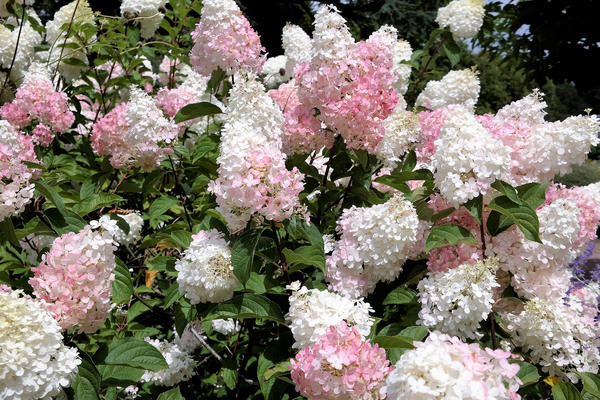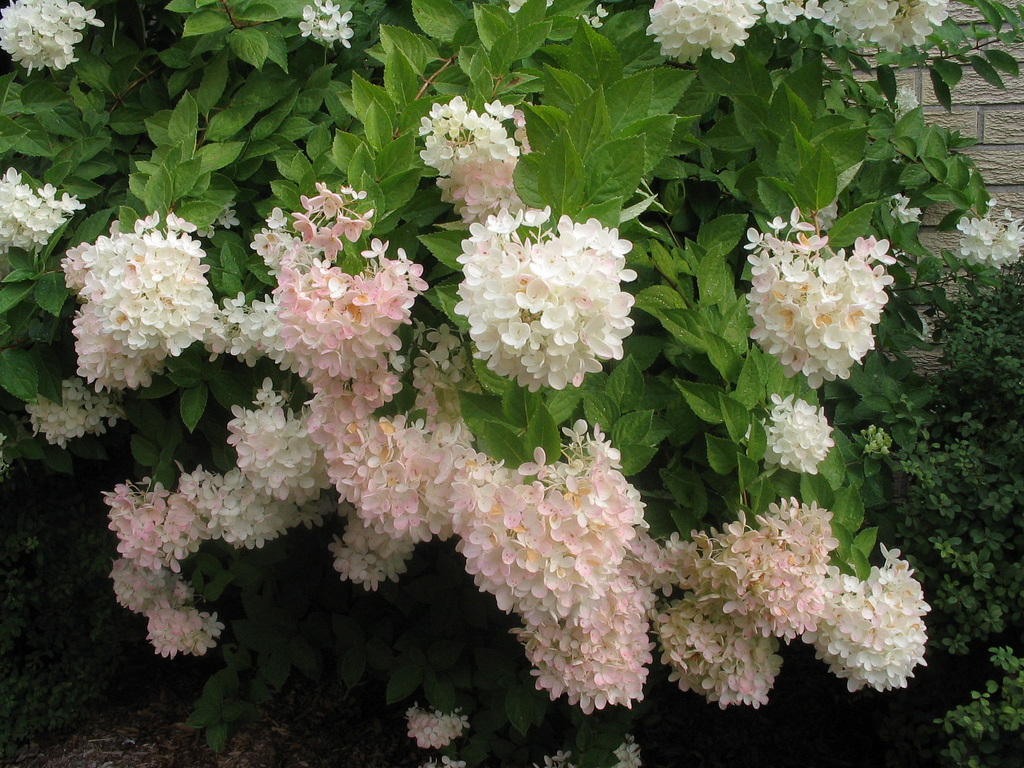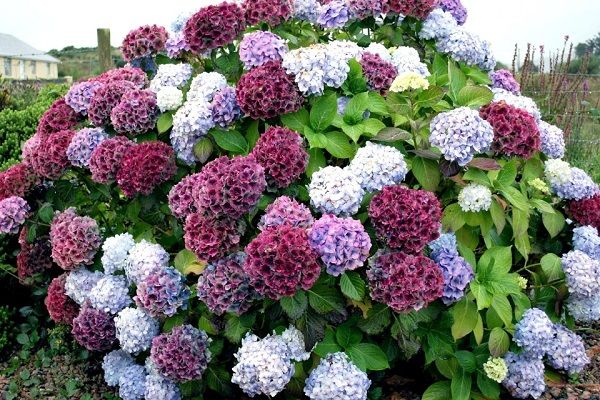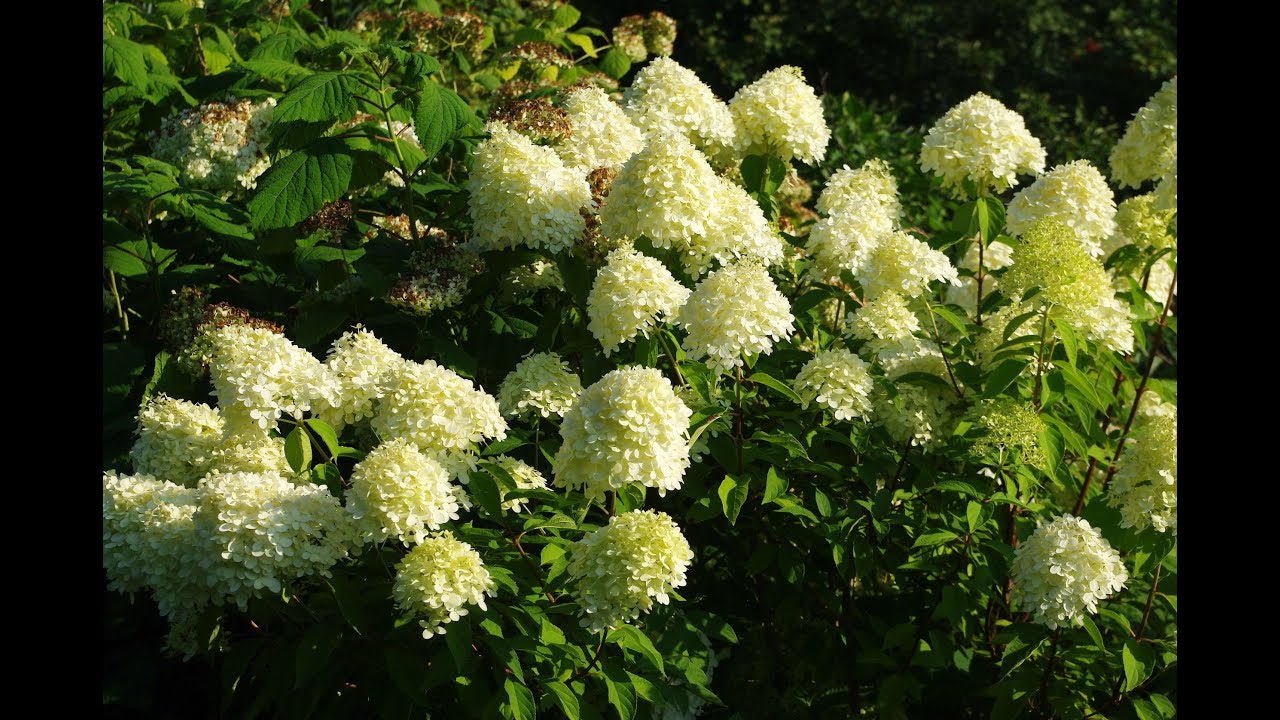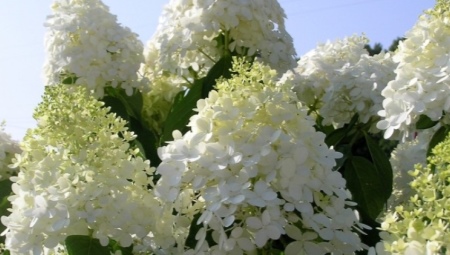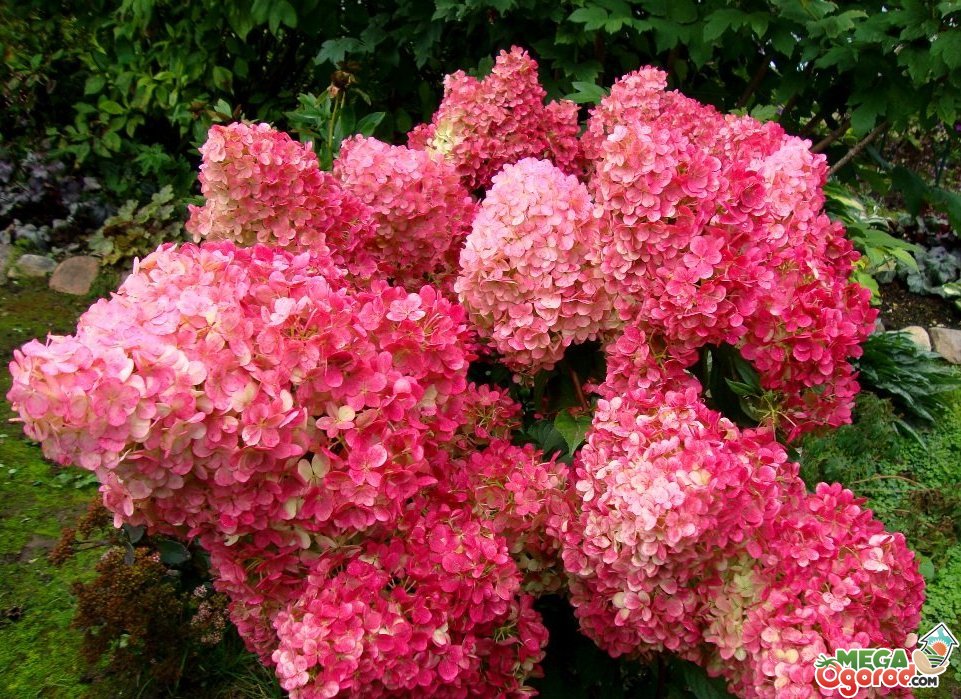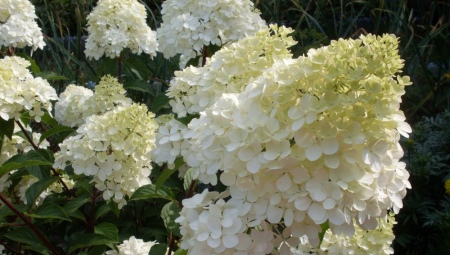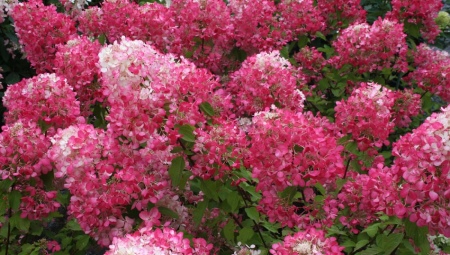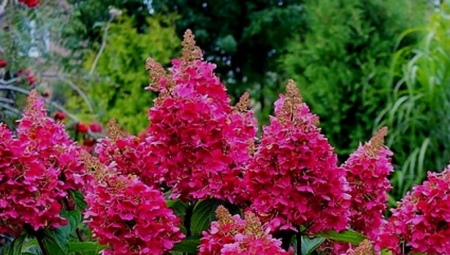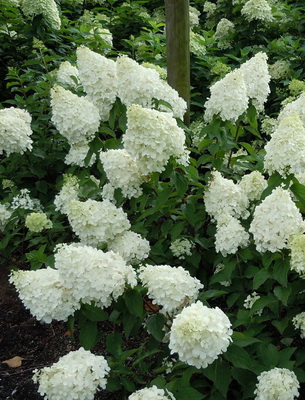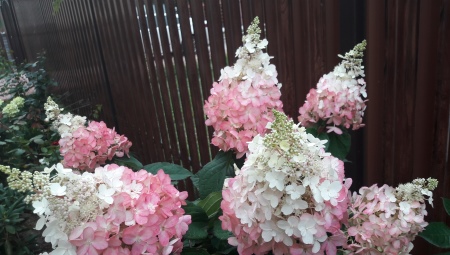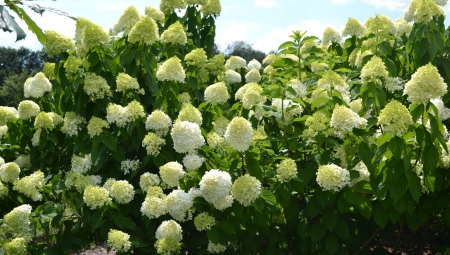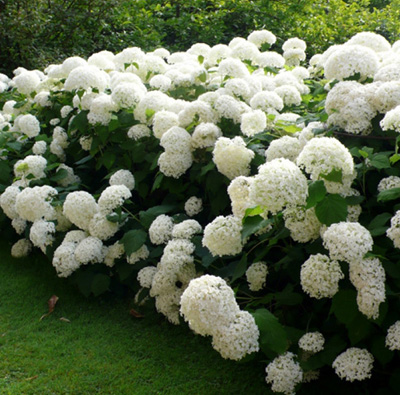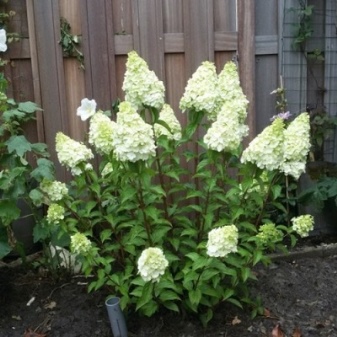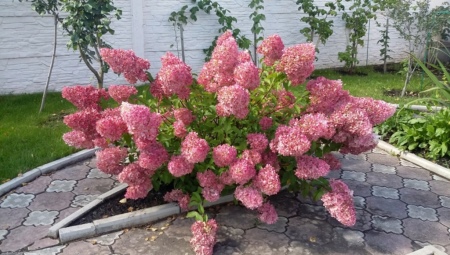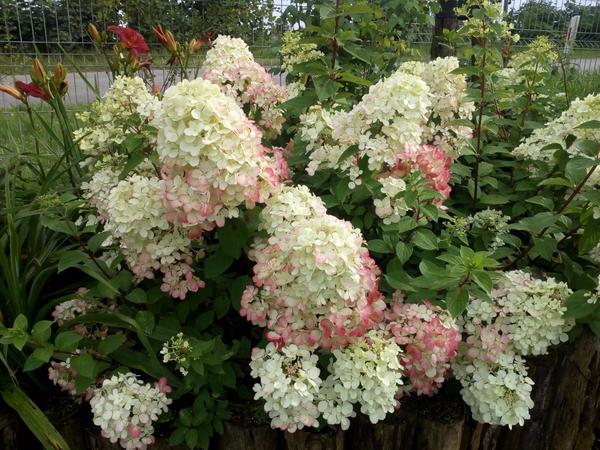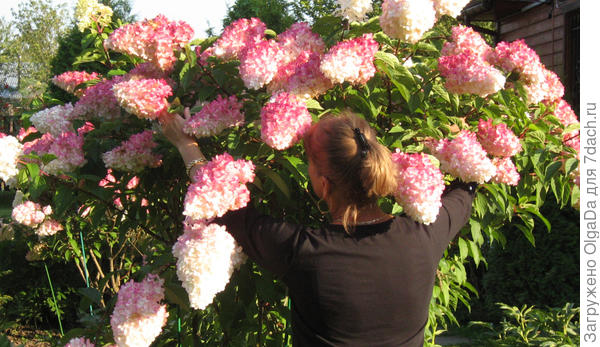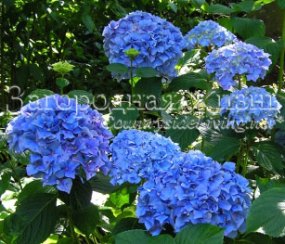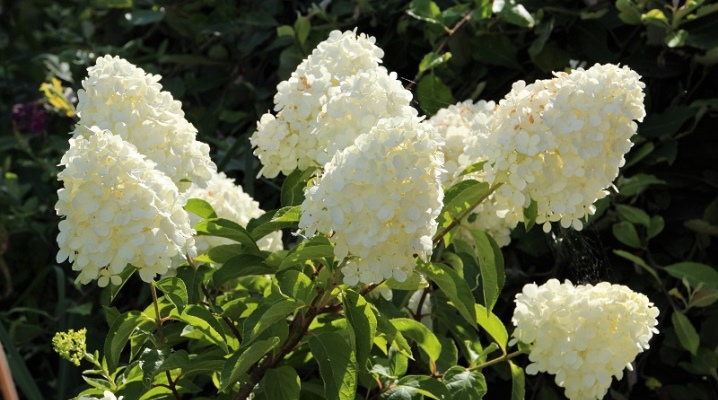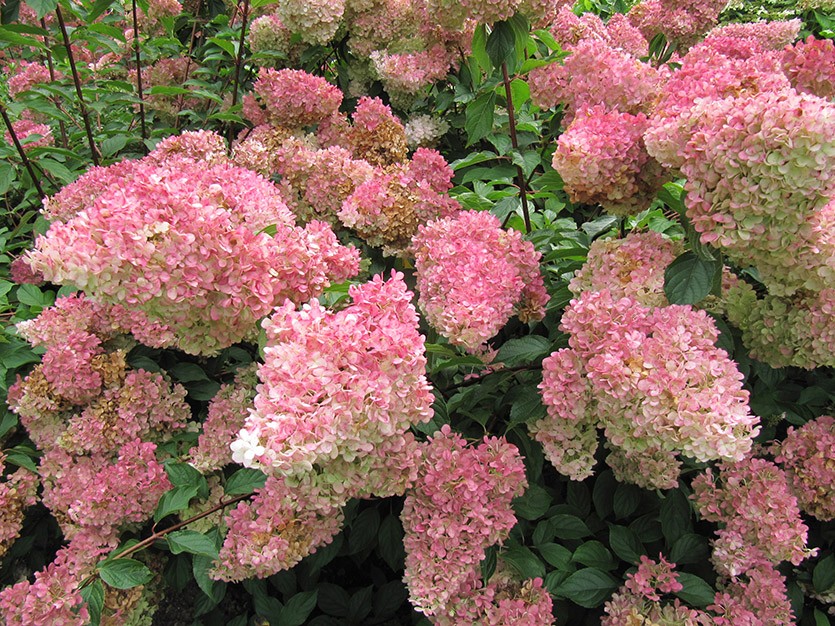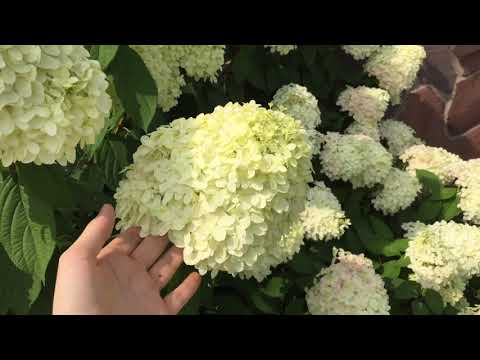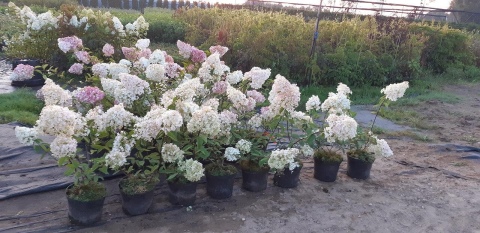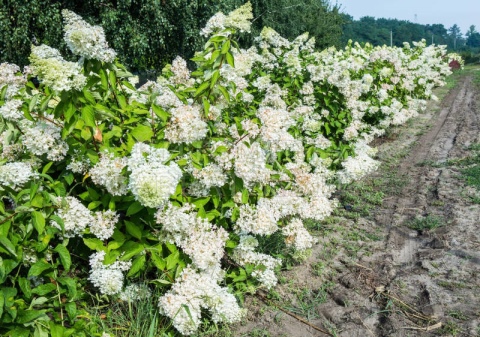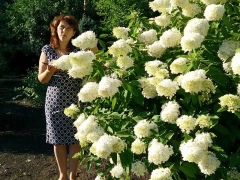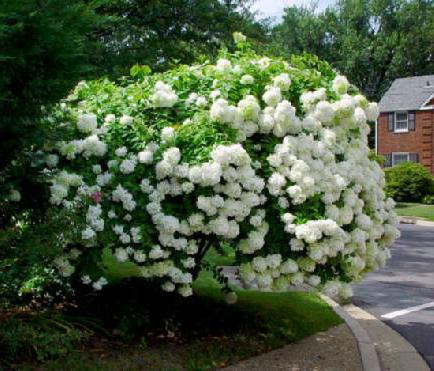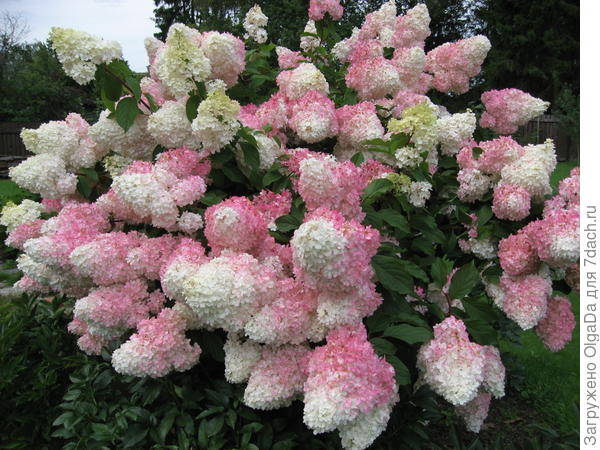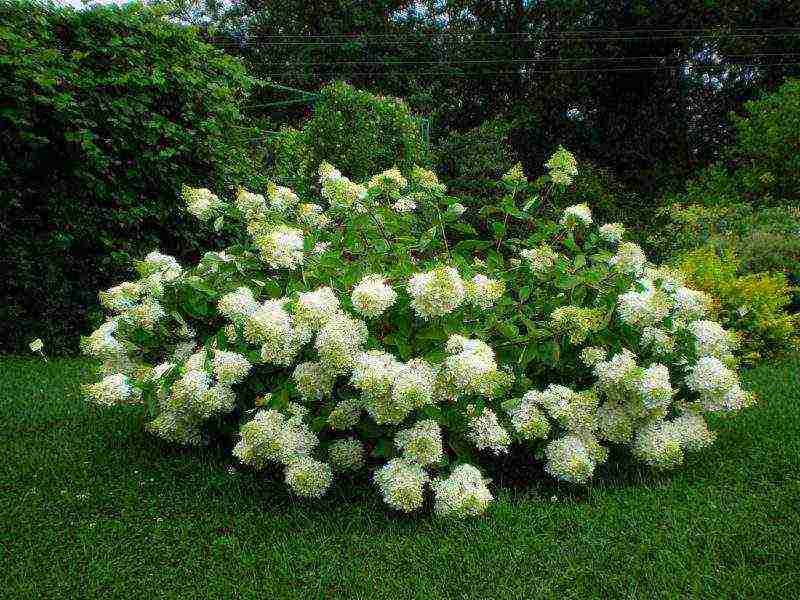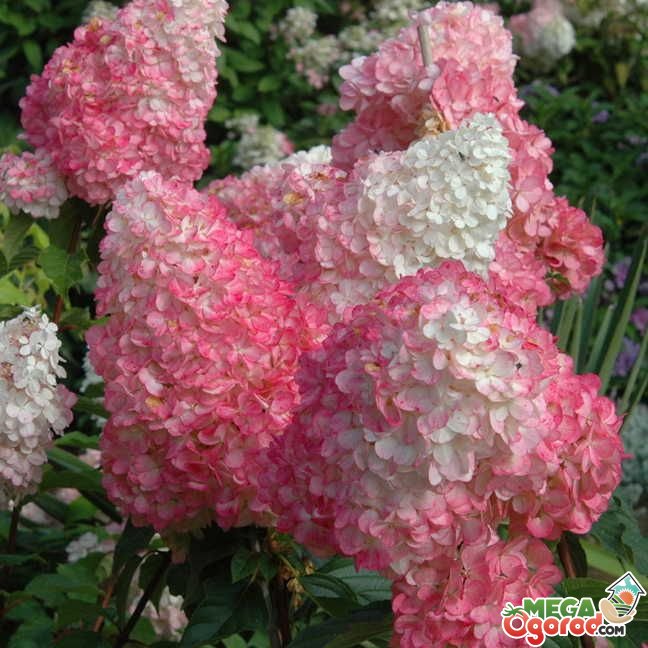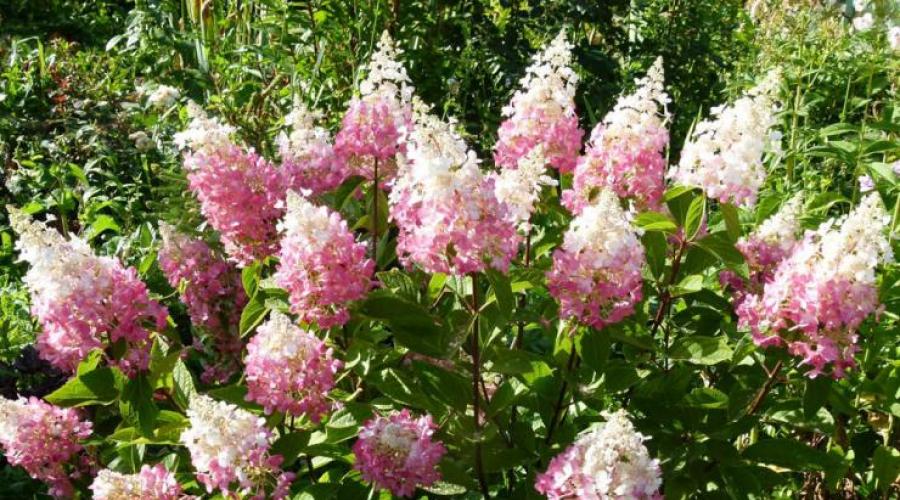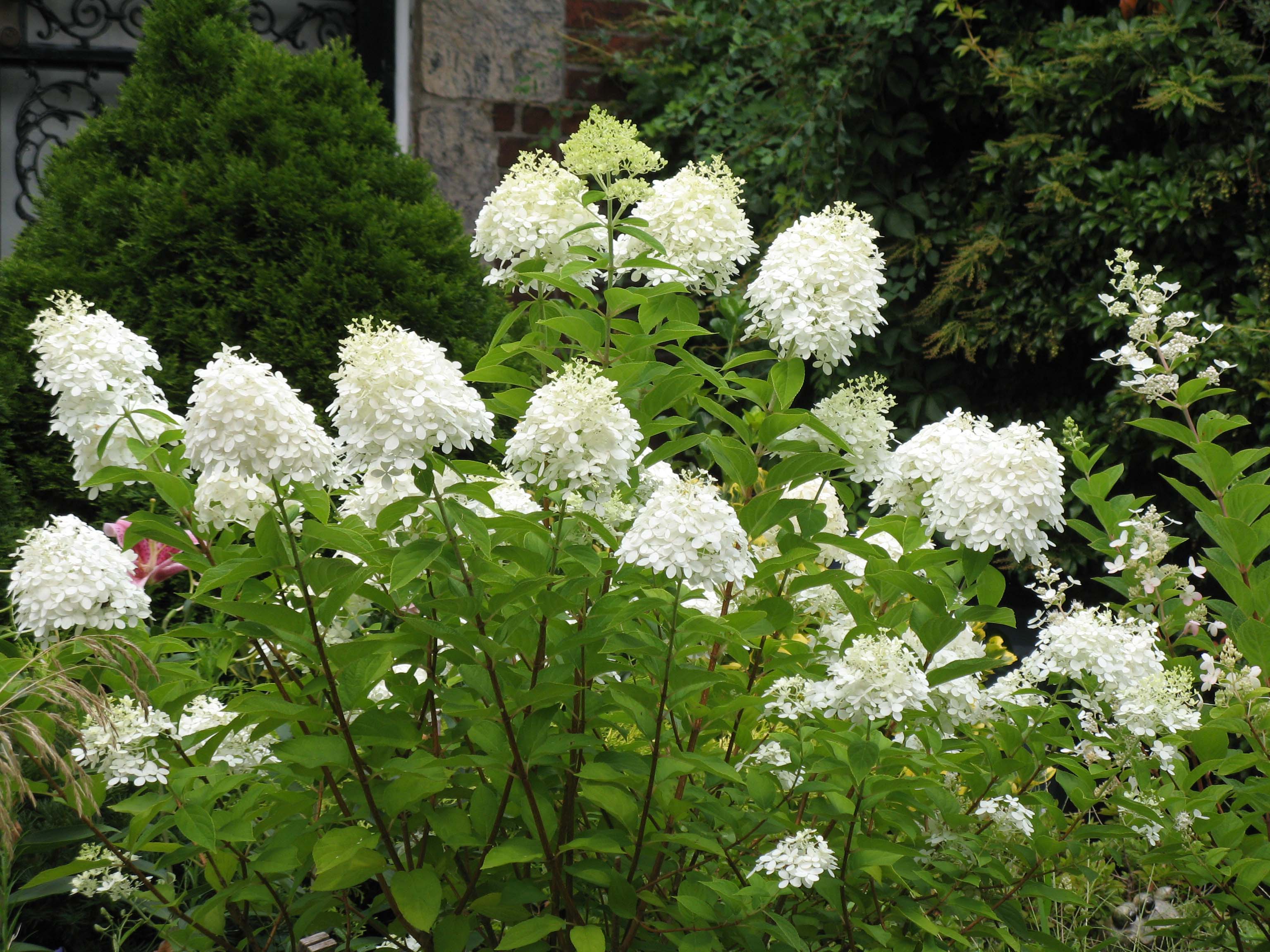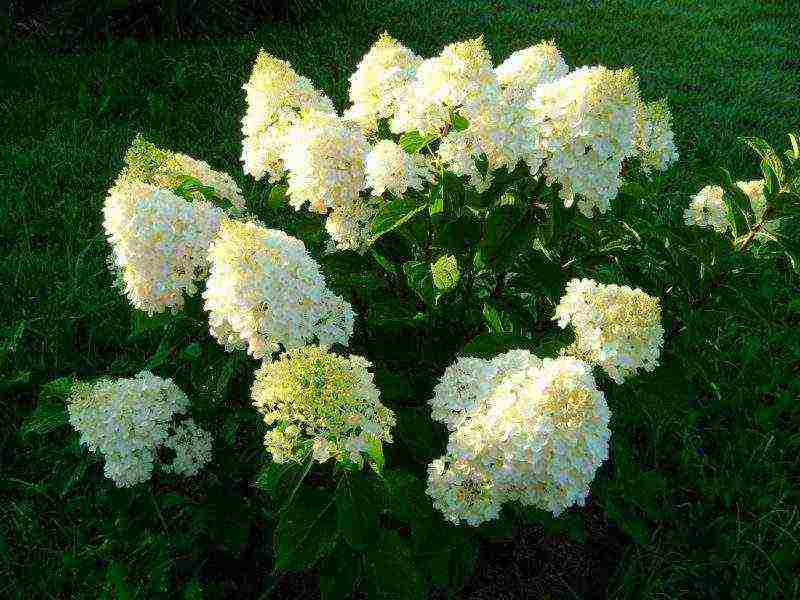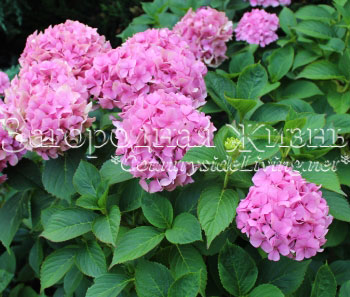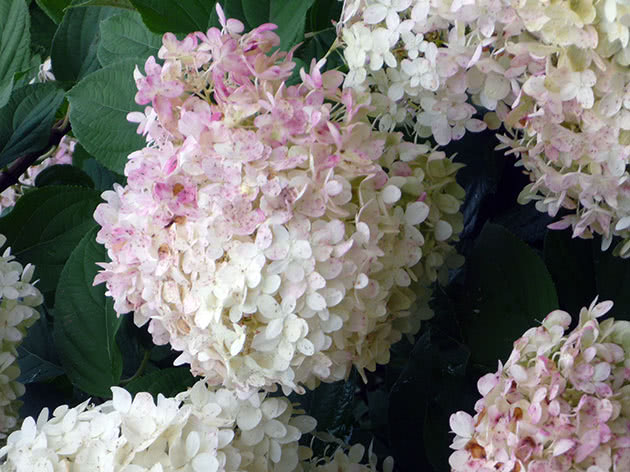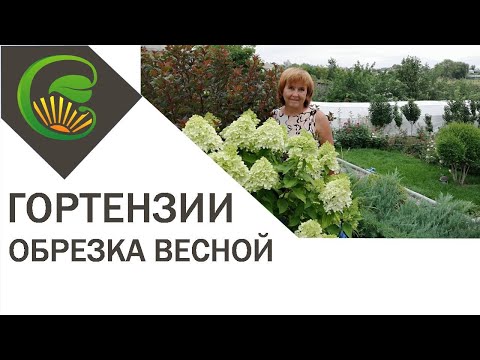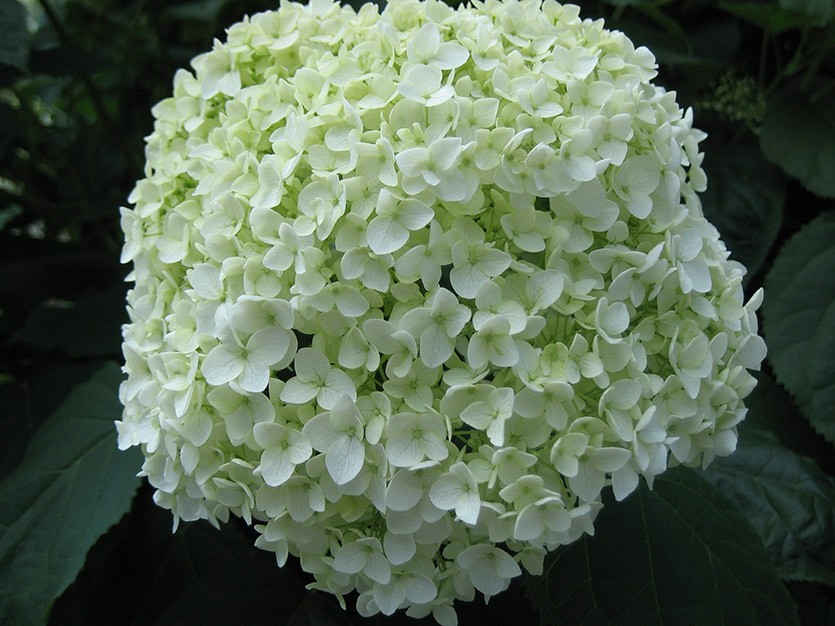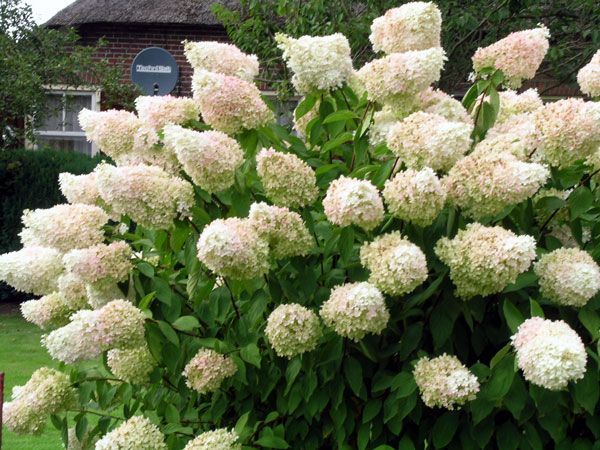Planting and further care
The features of planting and care in the open field for the hydrangea Grandiflora treelike and paniculate do not differ. In general, flowers do not require increased attention to themselves and are well adapted to the surrounding conditions.

For planting hydrangeas, the soil is prepared in advance
Selecting and preparing a landing site
Hydrangeas are considered light-loving plants, but for planting you need to choose a place with diffused light. Leaves and buds can burn out and lose their decorative appearance under the bright sun. It is better to choose the soil of medium acidity and high air permeability.
Important! Sandy soil can be oxidized by adding humus, peat or compost soil to it. Planting a flower is carried out both in autumn and spring.
If the bush is planted in the spring, you should dig it up in the fall and add organic matter. In the spring, the soil is loosened again and some mineral fertilizers are added
Planting a flower is carried out both in autumn and spring. If the bush is planted in the spring, you should dig it up in the fall and add organic matter. In the spring, the soil is loosened again and some mineral fertilizers are added.
How to plant
Step-by-step algorithm for planting hydrangea seedlings in open ground:
- Dig holes at a distance of 2 m from each other and 50 cm deep.
- Cover the bottom of each hole with a five-centimeter layer of drainage material: expanded clay crumbs or small pebbles.
- On top, add the same layer of soil mixture prepared from turf, humus and peat.
- Carefully position the seedling and straighten its roots. There is no need to roughly pull and apply them to the ground, because of this, mechanical damage may appear, through which infection gets. As a result, the root system may die.
- Fill the bushes with the remaining substrate, filling all the voids between the roots.
- Lightly tamp the soil around the trunk circle with your hand and pour soft water at room temperature.
Important! The root neck of the hydrangea should be 2 cm above ground level
Watering and feeding
You need to water the plant once every 5-7 days. For each bush, about 2 buckets of soft clean water at room temperature are consumed.
Organics together with mineral fertilizers are applied 4 times in one season:
- after warming up the soil, before the appearance of kidneys,
- before blooming buds;
- in July;
- after the full flowering of the bush.
Pruning
In the spring it is necessary to remove old shoots. If the bush is adult, then some branches are cut by a third to rejuvenate the flower.

Bush pruning is carried out annually
Preparing for winter
The variety has a high frost resistance, but in northern latitudes it is recommended to cover it for wintering. To do this, the trunk circle is covered with sawdust and dry foliage, and the upper part of the bush is wrapped in dense material.
Diseases and pests
Phantom is a variety with good genetics. He rarely gets sick, but still he is not immune from them. If the leaves of a plant have changed, this is almost always associated with some kind of ailment.
If a shrub suffers from excess water, if it is planted in soil with very low acidity, you grow it in the real sun - the leaves are likely to turn yellow.
If there is not enough water and nutrients for the Phantom, its leaves will begin to fall off.
If the plant is planted on alkaline soils, its leaves will turn pale - this is how chlorosis manifests itself. You can water the bush with a solution of citric acid with iron, this will save it.
This variety is afraid of gray rot, septoria and rust. When a sign of any of the diseases is found, the affected branches and leaves must be removed immediately. Then the plant is treated with an antifungal agent.
Pests can also spoil the condition of the hydrangea.It is threatened by aphids, spider mites and slugs. Aphids need to be washed off with a water jet, spider mites will be able to overcome "Fufanon" and "Tiofos". And if slugs attack the bush, they spread the "Molluscoid" around the plant
Hydrangea paniculata (Hydrangea paniculata)
Hydrangea paniculata (Hydrangea paniculata)
The company of the previous species is the same stable panicle hydrangea. She received the name for the shape of the inflorescences. Some of the flowers in the inflorescence are unattractive, the small ones are fertile, and the most beautiful and largest (sterile) ones are sterile white or creamy flowers. Fragrant inflorescences willingly "visit" butterflies.
Hydrangea paniculata variety Pinky Winky
Among the many varieties of panicle hydrangea, there are the most unusual ones:
- Kyushu with fruit and large sterile white flowers that serve to attract insects.
- The Limelight variety has beautiful fluffy inflorescences consisting only of sterile large flowers. Closer to autumn, they become greenish, like a lime fruit.
- Varieties that turn pink by autumn, for example, Grandiflora, are very attractive.
- Vanille Fraize has beautiful white-pink inflorescences.
- Looks great variety Pinky Winky (Pinky Winky). Its inflorescence, consisting mainly of small fruit flowers, is adorned with a large number of large butterfly flowers, which are pure white at the beginning of flowering, then change color from pale to bright pink, and turn red-purple by autumn. The decorative effect is enhanced by the biological feature of the hydrangea: the flowers in the panicle do not bloom simultaneously, but gradually, within one to two weeks, starting from the lower ones. The upper ones bloom with a white-winged butterfly, the middle ones are already starting to turn pink, and the lower ones are turning purple.
- Phantom;
- Bobo (Bobo);
- Polar Bear
- Pink Diamond;
- Fraise Melba
- Wim's Red.
Breeders have identified two forms of large-leaved wild hydrangea:
- l Japanese. Has inflorescences umbrellas. There are beautiful sterile flowers at the edges, and fruit-bearing flowers in the center.
- l Changeable. Differs in hemispherical inflorescences. A large number of varieties have been bred from this form, differing in various colors and sizes of flowers.
Flowering features
So on which shoots does panicle hydrangea bloom? Flowers are not formed on all shoots of the current year. Only on those that were formed from the upper buds of last year's shoots.
Interesting. Flowers are of 2 types. Some - only attract pollinators, while they themselves are sterile. Their diameter reaches 35 cm. Others give fruits and seeds.
Frost resistance
Hydrangea has a rather low winter hardiness. This is the main problem when growing in the Russian climate. But beautiful flowers compensate for the time and effort spent on caring for the flower. Hydrangea stems hibernate still green. Only the next year do they become lignified. This is due to the low winter hardiness.
Unlike the tree hydrangea, which is quite frost-resistant, the large-leaved hydrangea was previously grown only as a houseplant or in a greenhouse. Now many frost-resistant varieties have been bred.
For a successful wintering, the plant only needs shelter, it is also important to protect it from early autumn frosts and return spring

Shelter for the winter
The information on the packaging in which the cuttings were sold can help winter the large-leaved hydrangea. If there is an inscription USDA on it, then the variety refers to plants acclimated to regions where the temperature does not drop below -23 degrees in winter. On the territory of Russia, many regions have winters with lower temperatures. When grown in them, the large-leaved hydrangea is completely covered. It is even better to grow it in containers, pruning the plant for the winter and storing it in a cool place for wintering.
Diseases and pests
Weems Red is moderately resistant to pathological conditions. A particular risk is associated with:
Among these diseases, chlorosis is predominantly found. Feeding plants with iron salts helps to prevent it. The procedure is carried out 2 times a month. If the hydrangea is still sick, iron chelate will help it effectively. In the fight against pathological fungi, only branded insecticides are used that are suitable for the spectrum of action; home remedies are ineffective. Any pests dangerous for "Weems Red" are perfectly eliminated by "Aktara".
Against powdery mildew and leaf spot you need:
Some of the diseases begin due to improper maintenance and poor living conditions. The same chlorosis is provoked by an iron deficiency or an excess amount of lime in the soil. At the same time, the simultaneous action of such factors enhances their negative effect. Signs of chlorosis are:
their gradual drying;
preservation of the green color of the veins.
Chlorosis can cover the entire leaf or lead to the formation of large spots on it. Both of these manifestations are equally dangerous and deserve immediate action. If you have no idea what exactly caused the disease, you need to adjust the acid-base balance of the earth. In addition to acidification with peat, it can be improved with Al2 (SO4) 3. The amount of reagents is determined by the level of alkalization of the soil and can be from 2 to 5 kg per 1 m2.
Irrigation with rainwater or the use of softeners can help prevent chlorosis. Instead, water settling is sometimes used for several days. If these measures do not help, it is necessary to urgently reduce the introduction of mineral fertilizers. Be sure to check their composition to exclude the appearance of unwanted components. At home, a solution is used for feeding with iron: 2 g of vitriol per 1 liter of water.
If you need to use more or less vitriol, the amount of liquid is recalculated accordingly. The softening of the solution is achieved by the addition of citric acid.
Important: if the bush is in disrepair, you need to give preference to the store composition. Hydrangea can get burns from strong sunlight.
Sore spots become thinner and may even dry out. The only cure is to shade the problem culture.
Hydrangea can get burns from strong sunlight. Sore spots become thinner and may even dry out. The only cure is to shade the problem culture.
The combination of excessively bright lighting and lack of water leads to blackening of the foliage. Sometimes the disease begins with the appearance of a brown border. Lack of attention to the problem turns into the fact that it is aggravated - of course, this state does not go away. The main measure of treatment is shading the flower and watering it with the softest water possible. Then, over time, the situation returns to normal.
If the leaves are not only blackened, but also curled, become lethargic, then the cause may be a serious temperature drop and / or insufficient irrigation. When foliage simply curls, but does not turn black or weaken, the cause can be looked for in the ingress of herbicides. When a white bloom appears on the bush, it is better to remove diseased specimens immediately. It is impossible to cure them. But there is a great risk of infecting other plants.
Gray rot attacks primarily foliage and soft tissues that did not have time to get stronger. Excessive watering and unjustified overcrowding of plants contributes to its appearance. Infection manifests itself in the formation of softened gray areas on the leaves. It is recommended to cut and burn all sore spots. Severely affected bushes should be destroyed immediately.
With a weak development of gray rot, it is suppressed with a Bordeaux mixture or with the preparation "Fundazol". Peronosporosis (aka white rot) is treated by removing the affected areas. Then the sections are disinfected with potassium permanganate. From protective drugs help potassium permanganate, "Optima" and "Kuproksat".
Septoria develops if the weather is damp and cool in summer. The spread of the fungus from the base of the bush to the top is characteristic. The spots have a diameter of 0.5 cm. Cut off places are disinfected not only with potassium permanganate, but also with garden pitch. Of synthetic drugs, "Profit" helps.

